Aspiring performers don’t have to wait until adulthood to begin developing the craft, confidence, and discipline that acting demands.
In fact, childhood and adolescence are uniquely fertile periods for artistic growth: imagination is vivid, bodies are pliable, and learning happens at lightning speed.
Yet with so many classes, camps, and conservatories competing for attention, parents can feel overwhelmed—and young actors can be hurried down paths that either move too fast or not fast enough.
This guide breaks the journey into four clear stages, then explores the practical concerns that surround them—auditions, cost, safety, and the delicate balance between “kid” and “career.”
Feel free to dip in where your child is now, or read end-to-end to map a multi-year plan.
1. Why Start Early?

Children are natural storytellers. Long before a five-year-old can spell improvisation, they are embodying pirates, princesses, and space explorers in the living room. Acting classes channel this instinctive play into structured learning, teaching young minds how to focus their imaginations, cooperate with peers, and translate big emotions into clear, communicable choices.
Neuroscientists have shown that pretend play strengthens the brain’s “theory of mind” networks—the same circuits adults rely on to interpret colleagues’ motives or understand a novel’s characters. In other words, early acting isn’t just about applause; it’s cognitive cross-training for life.
From a career standpoint, starting early provides a runway that older beginners don’t have. Hours accumulated in youth productions or short-film workshops translate into hard-earned rehearsal discipline and on-set etiquette by the time college auditions roll around.
Agents and casting directors often keep files on talented teens they first noticed in elementary-school commercials or regional theater showcases. Early exposure doesn’t guarantee stardom, but it does build a résumé, a reputation, and—most critically—a sense of belonging in creative spaces.
Key take-aways
- Better social, linguistic, and empathic development
- A larger bank of creditable experience before adulthood
- Networking opportunities that grow organically over time
2. Foundation Stage (Ages 5–8)
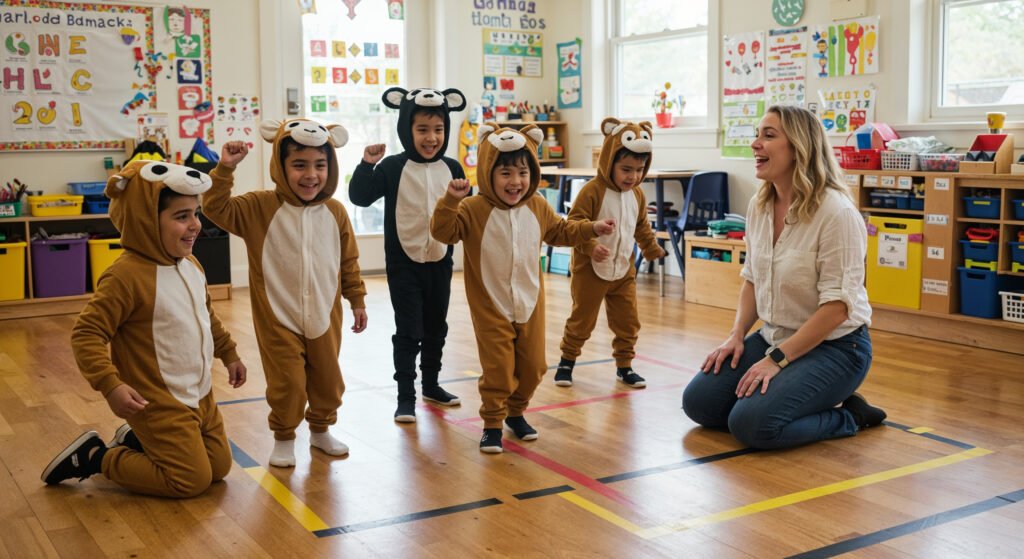
Young children learn best when their senses are engaged and pressure is low. Foundation-stage programs therefore emphasize playful discovery over perfect technique.
A typical “Creative Drama” class might start with a storytelling circle in which each child adds a sentence, then evolve into a movement game where students become animals exploring an imaginary jungle.
Through these seemingly simple exercises, kids practice projecting their voice, sharing focus, and respecting spatial boundaries on a “stage” taped out on the floor. Instructors trained in early-childhood education weave in vocabulary—projection, freeze, tableau—but keep sessions short (45–60 minutes) to match developing attention spans.
Parents often ask whether recitals at this age risk pushing children too hard. The answer lies in intent and scale.
A five-minute showcase in the final class—where every student narrates a line and takes a bow—can teach teamwork and quell stage fright without burdening anyone with line memorization marathons.
The litmus test: if your child leaves class buzzing with stories rather than drained or tearful, the foundation is solid.
Foundation-stage checklist
- Program type: Creative drama, introductory improv, half-day camps
- Class size: Fewer than 10 students ensures individual encouragement
- Instructor credentials: Early-childhood or elementary-theater certification
- Red flag: Rigid casting of “lead” vs. “chorus” roles in kindergarten showcases
3. Exploration Stage (Ages 9–12)
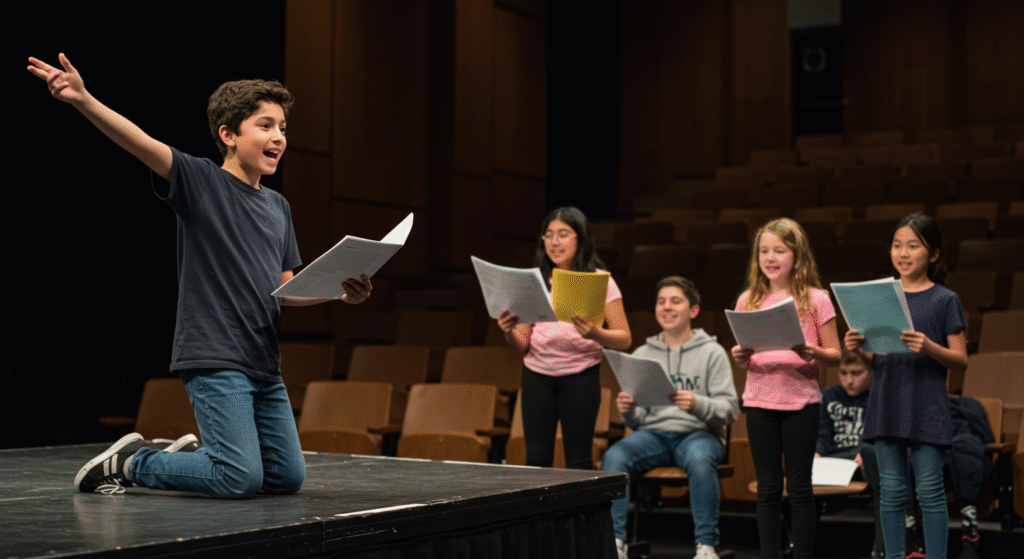
By fourth or fifth grade, children crave a bit more structure—and the thrill of a real audience. Exploration-stage courses introduce scripted scenes, basic blocking, and the first tastes of technical craft such as diction drills or breathing games.
The goal is still breadth, not specialization. One semester might culminate in a one-act comedy, the next in a short film written and shot by the class. These varied experiences help kids discover what excites them most: slapstick, Shakespeare, singing, or perhaps the quiet precision of on-camera drama.
Parents should watch not only for quality instruction but for a culture that values process over trophies. Competition festivals can be exhilarating but may also breed comparison if teachers frame everything as “win or lose.”
A healthy exploration program treats awards as a bonus, not the benchmark. Balanced instructors celebrate risk-taking—auditioning for a role outside a child’s comfort zone—and teach students how to give and receive notes with kindness.
Exploration essentials
- Weekly scene-study or studio classes (60–90 minutes)
- Community-theater productions with multi-age casts
- First exposure to musical-theater triple-threat (acting/singing/dance)
- Parental barometer: enthusiasm persists even when lines require home practice
4. Commitment Stage (Ages 13–15)

Middle school and early high-school years mark a pivot: hormones surge, identities shift, and serious young actors begin asking, “Could this be more than a hobby?” Commitment-stage programs rise to the challenge by deepening technique while introducing industry realities.
Scene-study now incorporates objective/tactic analysis; improv teams tackle long-form formats that demand narrative thinking; voice lessons work on range and stamina for two-hour rehearsals. At the same time, teachers start talking about headshots, self-tapes, and union rules—practical topics that ground artistic dreams in actionable steps.
A key benefit of starting commitment-level training at 13 instead of, say, 17 is the low-stakes runway it provides. Teens can experiment with methods—Meisner, Viewpoints, Shakespearean text—before college decisions loom.
They can also test professional waters in student films or regional commercials while parents still have legal oversight. The challenge is balance: academics, social life, and sleep can suffer if every evening is swallowed by rehearsals. Families should build in rest days and monitor burnout.
Commitment checkpoints
- Semester-long studio conservatories with audition entry
- Improv leagues or teenage Shakespeare camps
- Introduction to commercial/voice-over workshops
- Healthy schedule: no more than three major productions per school year
5. Pre-Professional Stage (Ages 16–18)
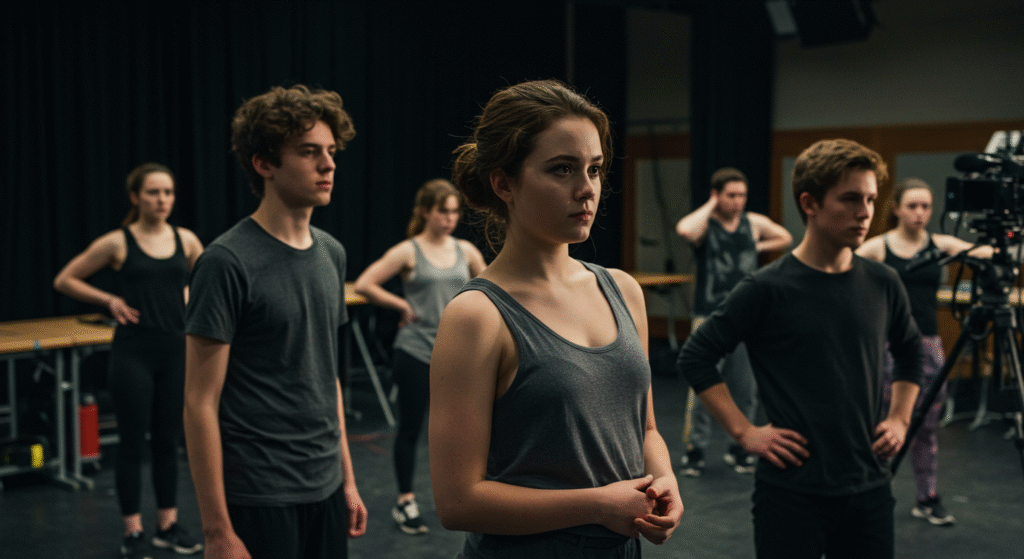
By late high school, serious young performers may pursue programs that mirror adult conservatories. Weekends could involve eight-hour rehearsals; weekday evenings vanish into script analysis and movement labs. Pre-professional curricula often cumulate in a senior showcase for agents or a filmed reel evaluated by industry mentors.
These environments demand maturity: students must self-warm-up, annotate scripts, and manage vocal health across long rehearsal blocks. Parents, meanwhile, shift from “chauffeur” to “career consultant,” double-checking that legal protections (Coogan accounts, union paperwork) are in place.
A vital question is whether to leap directly into the profession or attend drama school. Pre-professional programs—especially those attached to universities—provide honest feedback on readiness, assessing audition monologues and reels against current market standards.
Even for students who ultimately choose a non-arts major, senior-year conservatory work pays dividends: college interviews, public-speaking assignments, and leadership roles all benefit from sharpened presence and poise.
Pre-professional priorities
- Two-year teen conservatories or university summer intensives
- Polished theatrical résumé plus 1-minute contemporary & classical monologues
- Demo reel (≤ 2 minutes) showcasing range on camera
- Understanding of SAG-AFTRA/AEA eligibility paths
6. Core Skills Across All Ages
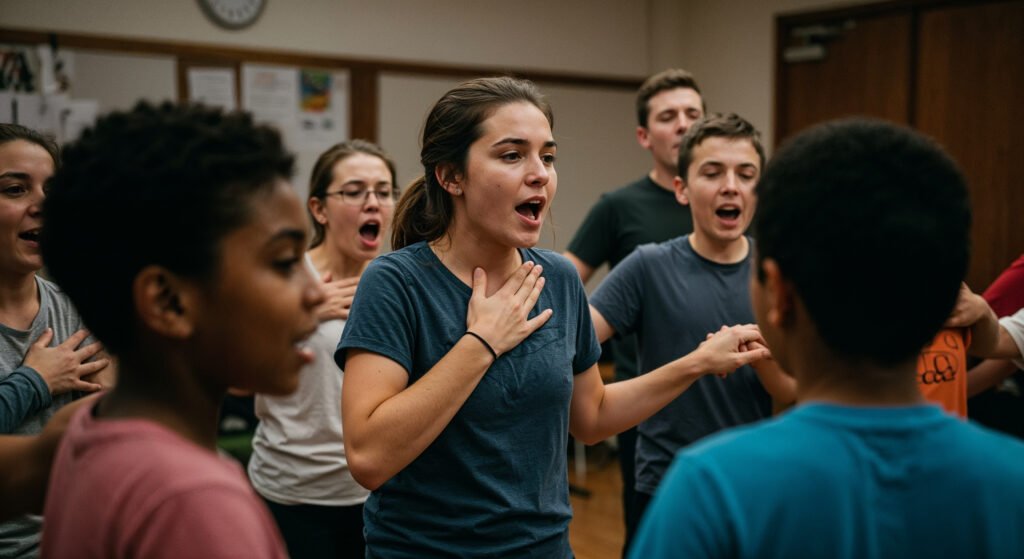
While curriculum changes with age, seven competencies underpin every stage. Breath & voice support guards against strain; clarity of speech ensures text lands; embodied storytelling turns ideas into visible, compelling choices.
Equally crucial are active listening and collaboration—qualities that transform solo talent into ensemble magic. Finally, discipline and resilience fuel the countless hours of rehearsal and the many audition rejections that even celebrated stars endure.
Mastery is incremental. A six-year-old learns to project by shouting “dragon roar” across the rehearsal hall; a sixteen-year-old perfects projection by sustaining a whisper that floats to the back row. Coaches keep the skill set consistent while scaling difficulty.
Seven pillars
- Breath & vocal support
- Diction & text clarity
- Body awareness & movement
- Active listening & reacting
- Imagination & risk-taking
- Teamwork & leadership
- Professional discipline & resilience
7. Choosing the Right Program
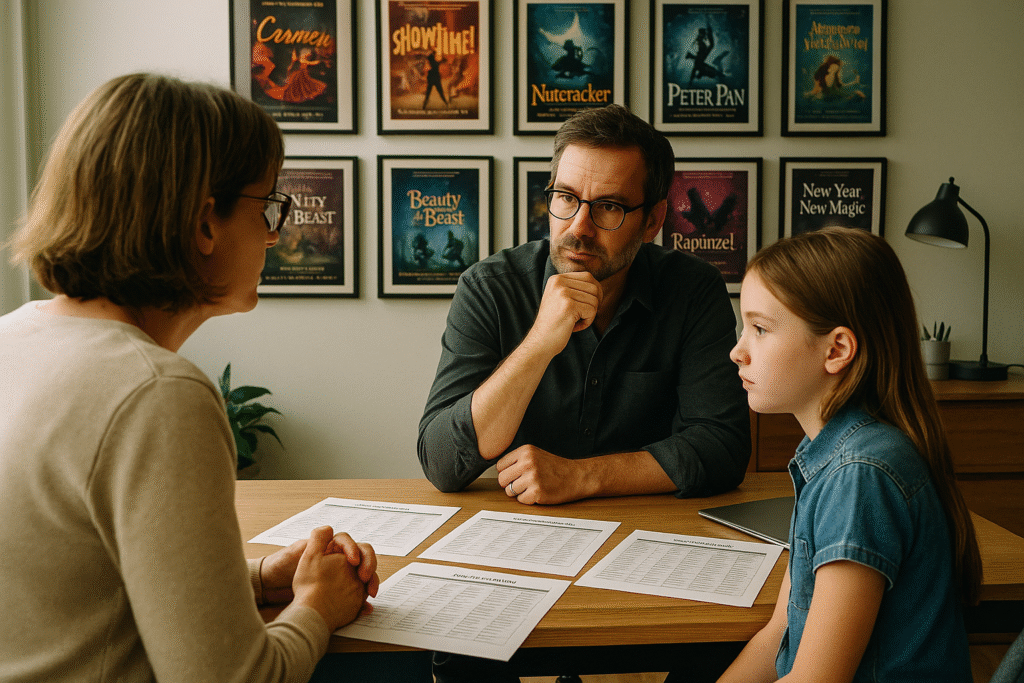
Selecting a school is as much about fit as it is about prestige. Begin with faculty bios: do teachers hold theater-education degrees or substantial professional credits? Next, observe a class if possible.
Are students engaged, and does the instructor balance challenge with encouragement? Then consider logistics—commute, cost, rehearsal schedule—and the family’s capacity to sustain those commitments for at least a semester. Finally, trust your child’s gut. If they exit a trial lesson beaming, the chemistry is right.
Avoid programs that promise “guaranteed Disney Channel auditions” for hefty fees or push children into risky industry showcases with little training. Quality schools focus on craft, not gimmicks. Their marketing highlights student growth stories rather than celebrity drop-ins.
Quick vetting guide
- Qualified, background-checked faculty
- Age-appropriate content and casting policies
- Transparent tuition and scholarship info
- Balanced emphasis on training and well-being
8. Auditions, Headshots, and Reels
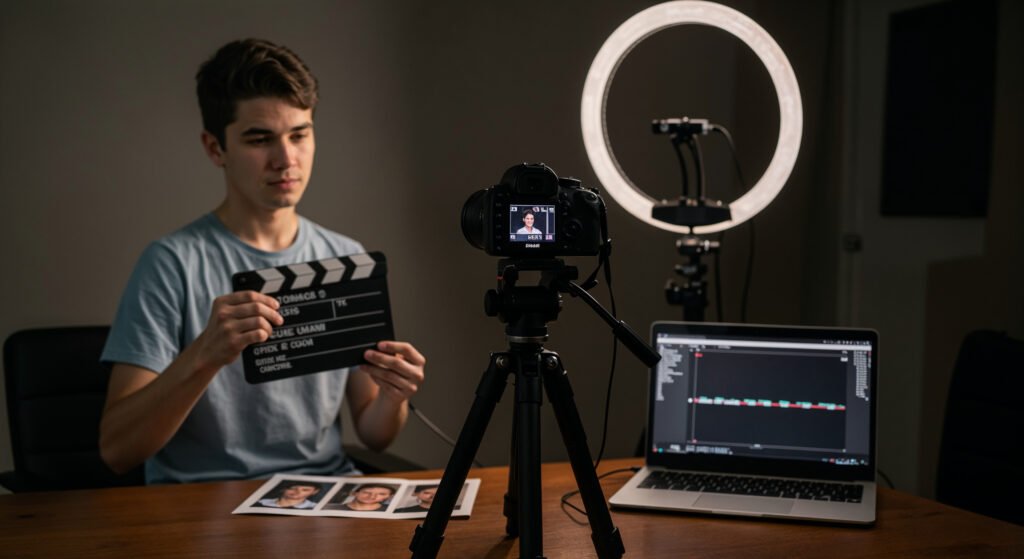
The first audition can feel like a cannonball into cold water—shocking but exhilarating. Preparation mitigates nerves. Encourage young actors to treat auditions as short opportunities to perform for new faces rather than as pass-fail tests. Rehearse slate (“Hi, I’m Maya Rivera, 5-foot-3, Dallas, Texas”), then transition into a tight, truthful monologue. Afterward, celebrate effort—booked or not—so the child’s self-worth stays anchored in craft, not outcomes.
Headshots are a business card: crisp, well-lit, and updated every 12 months or whenever braces, haircuts, or growth spurts change appearance. Reels evolve in short bursts: two contrasting scenes by age fourteen; a minute of TV-style close-ups and one comedic beat by seventeen. Keep clips short—casting associates skim dozens an hour.
Audition toolkit
- Monologue bank: 2 comedic, 2 dramatic, 1 classical
- Natural-light headshots; simple wardrobe, no heavy makeup
- Demo reel < 120 seconds, HD resolution
- Spreadsheet for tracking submissions, callbacks, feedback
9. Balancing School, Life, and Acting
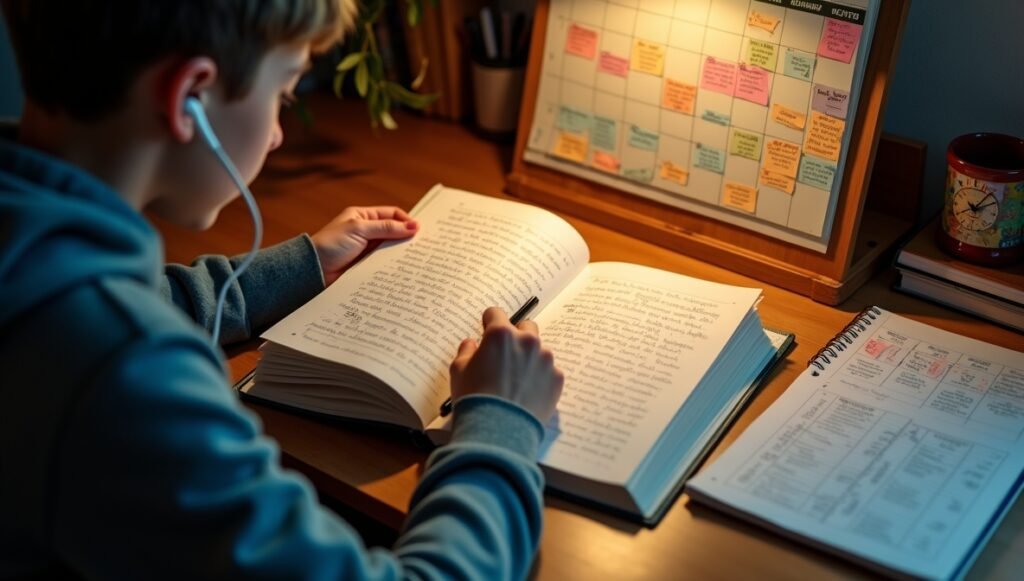
Academic grades, piano recitals, soccer playoffs—the calendar can resemble a Tetris board. Families should review commitments every term, pruning where necessary. Remember: sustainable artistry thrives on rest and diverse experiences, not 24/7 rehearsal. Pediatricians recommend 8–10 hours of sleep for adolescents; late tech-week nights require next-day adjustments or homework planning. Encourage friendships inside and outside theater to avoid social tunnel vision.
Mental health matters too. Rejection stings at any age, but teens often feel it acutely. Normalize “no thanks” responses as part of the gig and model resilience by debriefing each audition: What went well? What can improve? Then pivot focus to new growth goals rather than ruminating.
Balance strategies
- “One day off” rule: zero arts or sports every seven days
- Shared online calendar for the family
- Homework-before-rehearsal block (even 30 minutes)
- Post-audition reflection ritual: ice-cream chat, short walk, journal entry
10. Cost Breakdown and Scholarships

Acting can be affordable—many community theaters charge little more than a sports league fee—but elite intensives can rival private-school tuition. Breaking expenses into categories helps families prioritize:
- Training fees: weekly classes, conservatories, summer camps
- Tools: scripts, dance shoes, sheet music, digital recording gear
- Marketing: headshots, résumé prints, website or casting platform fees
- Travel: gas, parking, occasional flights for out-of-town auditions
Scholarships exist, especially at nonprofit youth theaters and university programs. Research early; deadlines often fall six months before class begins. National organizations like YoungArts, the Princess Grace Foundation, and local arts councils provide grants for teens demonstrating both talent and need.
Budget tips
- Bundle multiple weekly classes for sibling or multi-class discounts
- Swap private-lesson packages for small-group coaching
- Use student photographers from film schools for low-cost headshots
- Apply for at least three scholarships each spring
11. Online vs. In-Person Training
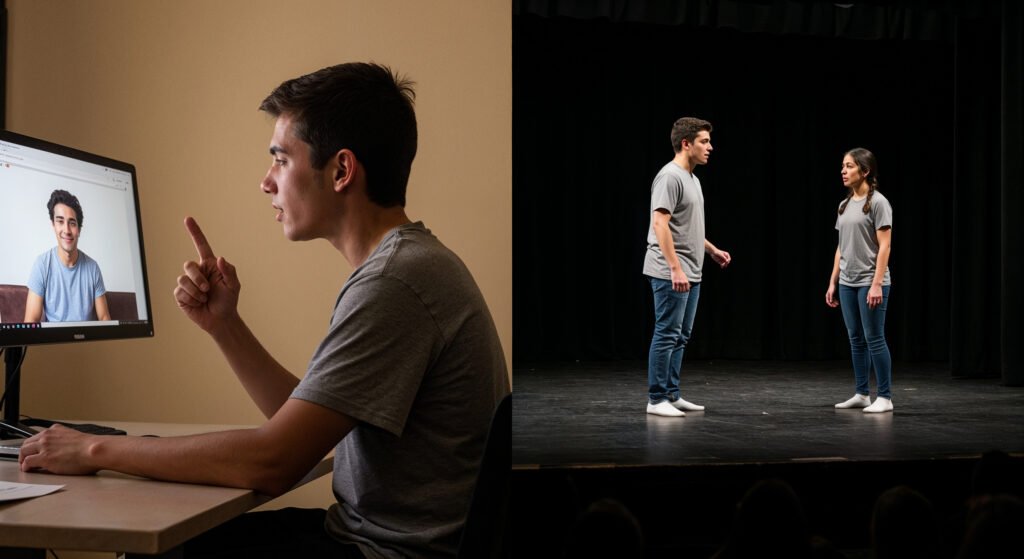
When the pandemic propelled acting onto Zoom, skeptics feared craft decay. Yet many young actors flourished in virtual voice, dialect, and on-camera technique classes.
Online training offers flexible schedules and global teacher access; a teen in rural Idaho can now study Meisner with a London coach. Still, certain skills—stage combat, mask work, precise blocking—require shared physical space. The sweet spot for most families is a hybrid approach: online script analysis midweek, in-person ensemble rehearsals on weekends.
One caveat: digital fatigue. Staring at screens for school plus acting can erode enthusiasm. Schedule breaks, use external webcams for variety, and incorporate standing warm-ups to keep energy flowing.
Hybrid recipe
- Remote: monologue coaching, dialects, industry Q\&As
- In-person: movement, dance, live scene study
- Tech: quality mic, ring light, neutral backdrop for virtual classes
12. Safety, Well-Being, and Labor Laws
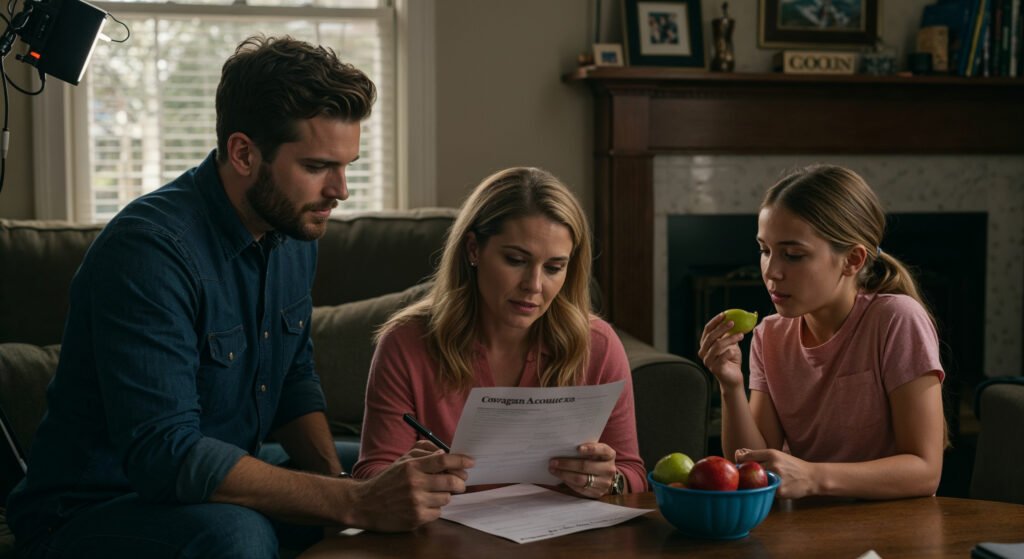
Child-actor safeguards exist for a reason—history shows that charming stage lights can cast long shadows if adults fail to protect minors. Parents should know local labor regulations: work-hour caps vary by state, and some require on-set tutors. Earnings laws like the Coogan Act mandate a portion of income be set aside in blocked trust accounts. Reputable producers understand these rules; any pushback is a warning sign.
Equally critical is emotional safety. Scripts for older teens might touch on intense themes. Healthy programs provide content warnings, allow opt-outs, and offer alternative assignments without shaming. Keep an open dialogue with your child: “How did rehearsal feel today?” is as important as “Did you remember your lines?”
Safety essentials
- Verify background checks for all adults in youth programs
- Review scripts for age-appropriate content
- Ensure Coogan / UTMA accounts before first paycheck
- Teach kids clear boundaries and assertive communication
13. Parent’s Role: Support Without Pressure
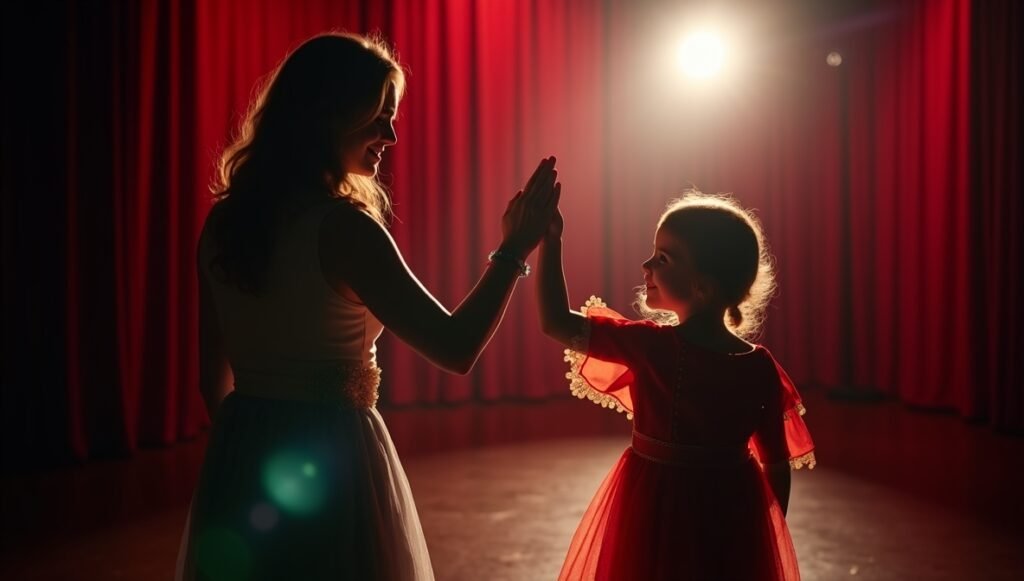
Parents walk a tightrope: too little involvement and logistics crumble; too much and the child’s autonomy shrinks. The sweet spot is facilitator and fan, not micromanager. Handle scheduling, nutrition, and transportation, then step back in rehearsal rooms unless invited. Celebrate growth—“Your projection improved!”—rather than fixating on casting results. Model professional courtesy: be on time for pick-ups, pay tuition promptly, and thank instructors. Kids learn industry etiquette first from observing their guardians.
Remember, acting is a long game. Today’s ensemble line could lead to next year’s lead, or might not—and that’s okay. The ultimate win is a resilient, articulate, empathetic young adult who can command a room whether performing Hamlet or presenting a science project.
Support best practices
- Provide materials but let the child pack their own audition bag
- Encourage rest and varied hobbies to prevent creative tunnel vision
- Praise effort, curiosity, and risk-taking over external success
- Stay educated on industry scams and advocate firmly when needed
14. Frequently Asked Questions

How many weekly hours are ideal for a 10-year-old? Two to four structured hours, plus informal practice like reading scripts aloud at home, keeps skills growing without burning out young brains or vocal cords.
Does my teen need an agent right away? Not necessarily. Many start with student films and community theater to build tape. An agent becomes useful when significant regional or national on-camera opportunities arise.
Are online classes worth the money? Yes—for voice, dialect, audition coaching, and even some improv drills. In-person remains superior for movement-heavy disciplines and ensemble development.
What if my child wants to quit mid-semester? Ask why. If stress, scheduling, or a toxic class climate is the culprit, address the root. Encouraging completion of a short commitment can teach responsibility; forcing long-term misery can kill passion.
15. Final Thoughts
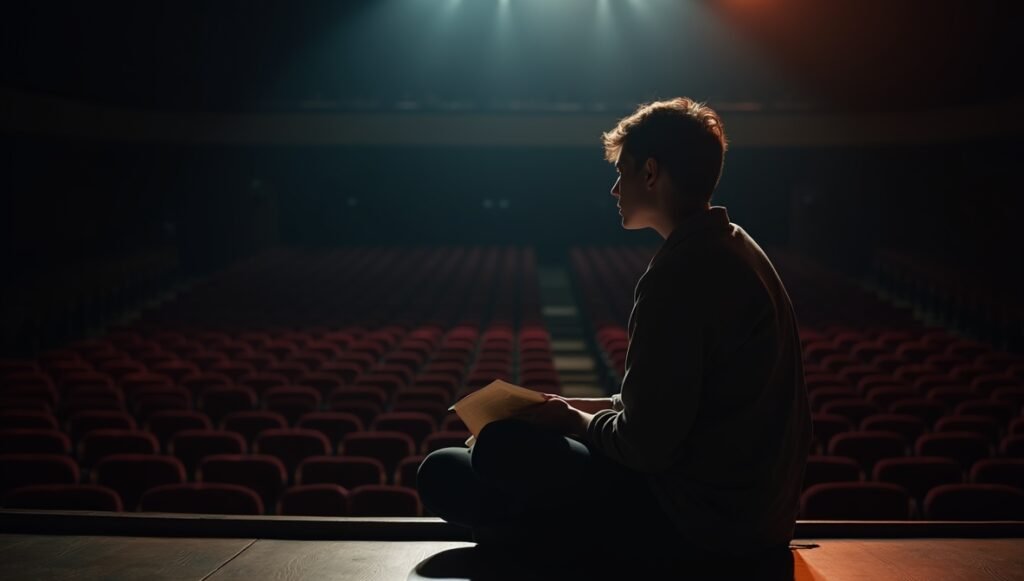
The journey from bright-eyed kindergartener to confident young professional is anything but linear. Interests ebb, scheduling shifts, puberty rearranges voices and priorities. What endures is the transformative power of storytelling: learning to listen, to empathize, to step into another’s shoes.
When crafted with care—stage by stage, skill by skill—youth acting training becomes less about chasing fame and more about cultivating humans who communicate with clarity and lead with imagination.
So map a plan, but hold it loosely. Allow detours, celebrate small victories, and remember that the standing ovation your child treasures most might come years down the road, when they use the confidence forged under stage lights to ace a college interview, pitch a startup, or comfort a friend. In that moment, the investment in their creative education pays lifelong dividends.

